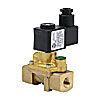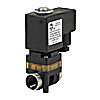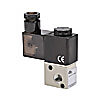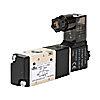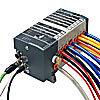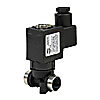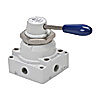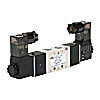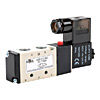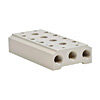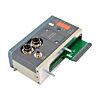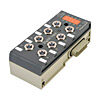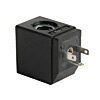 Cookies are not enabled on your browser.
Cookies are not enabled on your browser.Cookies are required for our site. Please enable cookies in your browser preferences to continue.
- Barcode / RFID / Vision
- Bulk Wire & Cable
- Cables (Terminated)
- Circuit Protection / Fuses / Disconnects
- Communications
- Drives & Soft Starters
- Enclosure Thermal Management & Lights
- Enclosures & Racks
- Field I/O
- HMI (Human Machine Interface)
- Hydraulic Components
- Motion Control
- Motor Controls
- Motors
- Pneumatic Components
- Power Products (Electrical)
- Power Transmission (Mechanical)
- Process Control & Measurement
- Programmable Controllers
- Pushbuttons / Switches / Indicators
- Relays / Timers
- Safety
- Sensors / Encoders
- Stacklights
- Structural Frames / Rails
- Tools & Test Equipment
- Valves
- Water (Potable) Components
- Wire & Cable Management
- Wire & Cable Termination
- Retired Products
Configuration Utilities
- PLC Family Selector
- P1000 PLC Systems
- P2000 PLC Systems
- P3000 PLC Systems
- ProductivityCODESYS
- CLICK PLC Systems
- Do-more® BRX PLC Systems
- LS-Electric® XGB PLC Systems
- Productivity®Open Systems
- Datalogic® Safety Light Curtains
- LS-Electric® Servo Systems
- Nitra® Pneumatic Grippers
- Object Detection (Sensors)
- PAL Controller Configurator
- Precision Gearbox Selector
- Protos X® Field I/O
- Pyrometers Selector
- Quadritalia® Modular Enclosures
- Stellar® Soft Starters
- Stepper System Selector
- SureFrame T-slot Extrusion
- SureMotion® XYZ Gantry
- SureServo2® System Selector
- SureStep® Linear Actuators
- Timing Belts & Pulleys
- Werma® Stacklights
- ZIPLinks
Directional Control Valves: Ports and 'Ways'
2 Port Valves
2 Port Valves
2 port, 2 position valves have a single path through the valve which can be opened or closed. Actuation is typically via an electric solenoid, but air pilot and manual actuation are also somewhat common. 2 port, 2 position valves provide a simple on/off function, and are used to connect, switch, or isolate discrete systems. While primarily intended for pipeline applications (instead of pneumatic) AutomationDirect offers a variety of 2 port pipeline valves.

Schematic Symbol for
2 port, 2 position valve
(more about circuit symbols)
Shop for 2 port NITRA® pipeline valves:
3 Port Valves
3 Port Valves
With 3 port valves, the air path is either from the pressure port(1) to the actuator port(2), OR from the actuator port(2) to the exhaust port(3). 3 port valves are often used with spring return cylinders, so that the spring action returns the cylinder to the retracted position when the valve is in the exhaust position. 3 port valves can be electrically driven in both directions with 'double solenoids' (requiring separate control signals), but it's more common to have a single solenoid with spring return (and operate in sync with a single control signal).

Schematic Symbol for
3 port, 2 position valve
(more about circuit symbols)
Shop for 3 port NITRA® valves:
4 Port Valves
4 Port Valves
4 port valves offer the ability to extend and retract a cylinder using pneumatic force in both directions. When connected to a double acting cylinder, a 4 port valve allows air pressure from one port to extend the cylinder, while allowing air from a second port to exhaust, and visa-versa. Two position versions are used when simply extending and retracting are desired, while three position valves allow for special operations. The Center Closed version is the most common, and allows "inching" operations. Other options include center exhaust, and center preasure.

Schematic Symbol for
4 port, 2 position valve
(more about circuit symbols)

Schematic Symbol for
4 port, 3 position, center closed, valve
(more about circuit symbols)
Shop for 4 port NITRA® valves:
5 Port Valves
5 Port Valves
5 port valves offer similar functionality to 4 port valves but have separate exhaust ports for each actuator port (this is generally due to the mechanical layout of the valve, and an effort to keep the valves simple and to reduce cost). If speed controls are used on the exhaust ports of the valve the speed of the cylinder motion may be individually controlled for the extension and retraction strokes.
5 port valves are available in 2 position and 3 position models (learn more). The 2 position models are available with double solenoids or single solenoids (with spring return). The 3 position models have double solenoids.

Schematic Symbol for
5 port, 2 position valve
(more about circuit symbols)

Schematic Symbol for
5 port, 3 position valve
(more about circuit symbols)
Shop for 5 port NITRA® valves:
Ports vs "Ways"
Valves are often referred to by their number of ports, and also by the number of "ways" that air can enter or exit the valve. In most situations the number of ports and ways are the same for a given valve, but take a look at the 3 position example above. It has five ports, but it is considered a 4 way valve because two of the ports share the same exhaust function. This is a holdover from hydraulics where the two exhaust paths are joined (internally to the valve), so that only one exhaust port is required, and only one return line is required to get the hydraulic oil back to the storage tank for re-use. The single return port (exhaust) is only counted as a single "way". In the case of our pneumatic valve (above) with similar functionality, the separate exhaust ports are created for mechanical simplicity (and as a cost saving measure), but they are not considered distinct "ways". The symbols above (and on this page) detail many of the ports, ways, and positions of common pneumatic valves. The specification for "ways" can be somewhat tricky; analyzing the circuit symbols is a better method for verifying that a given valve offers the required functionality.
Shop ALL NITRA® Valves:
Here are ALL the directional control valves offered by AutomationDirect:
Check out our job openings
Free Online PLC Training
FREE Video Tutorials
FREE e-Newsletter
Automation Notebook
Product Literature
White Papers
News, Product and Training Bulletins
E-Books
 Safe &
Secure
Safe &
Secure

We accept VISA, MasterCard, Discover, American Express, PayPal or company purchase orders.
Voted #1 mid-sized employer in Atlanta
Check out our
job openings

